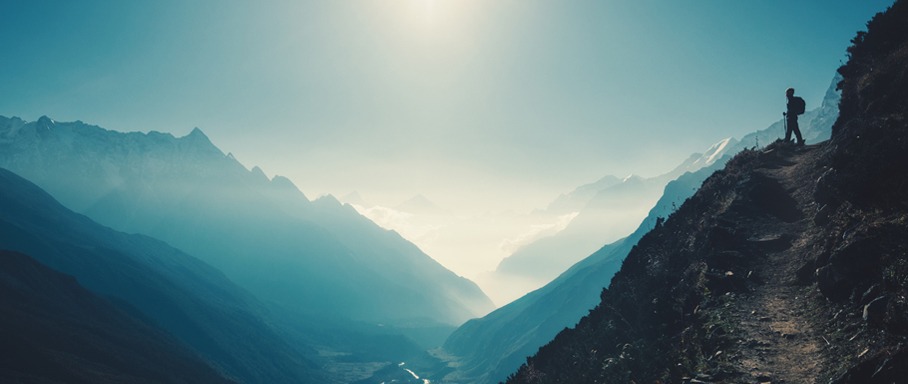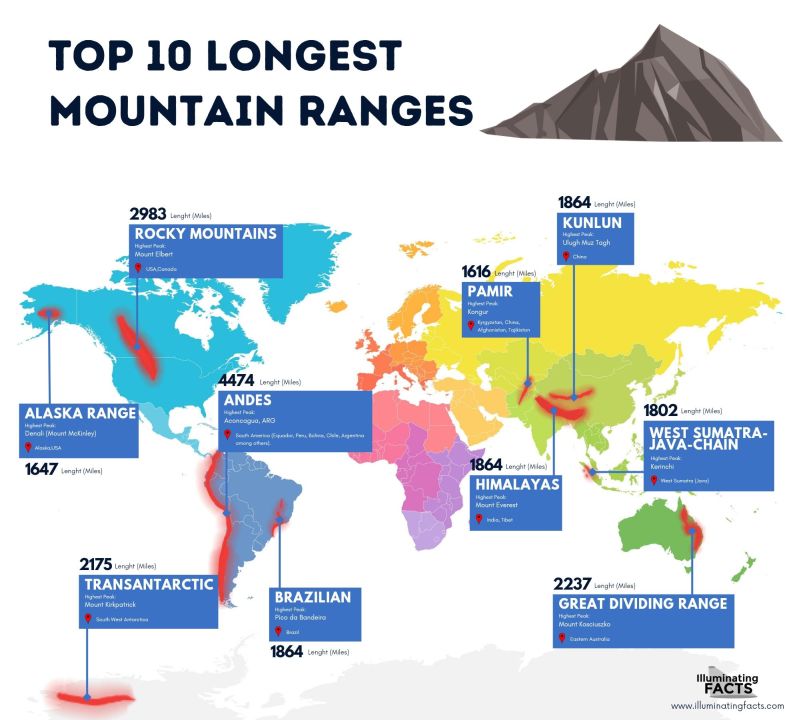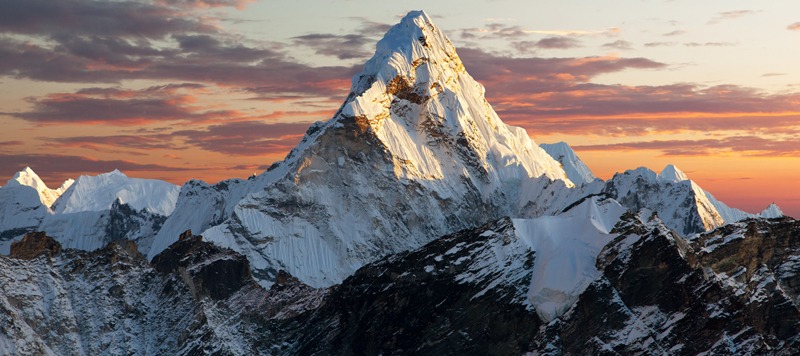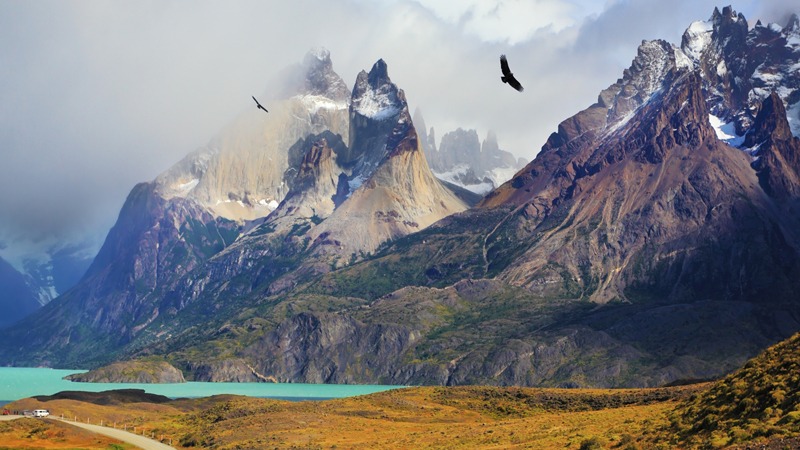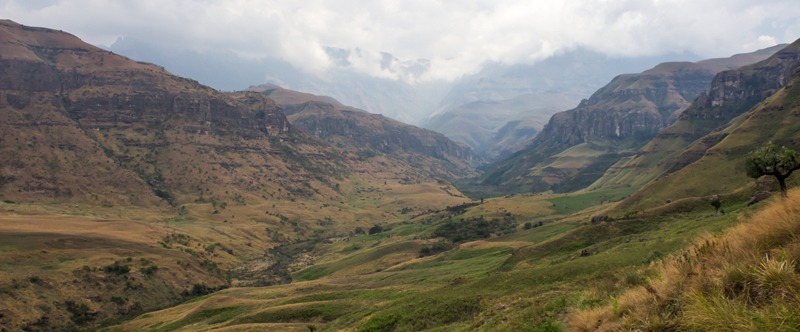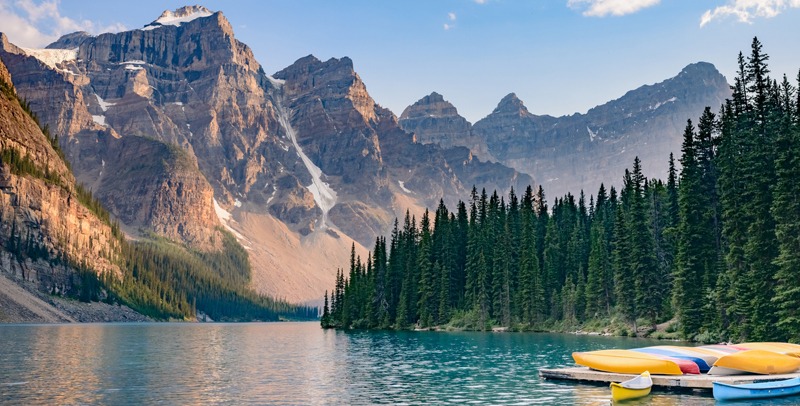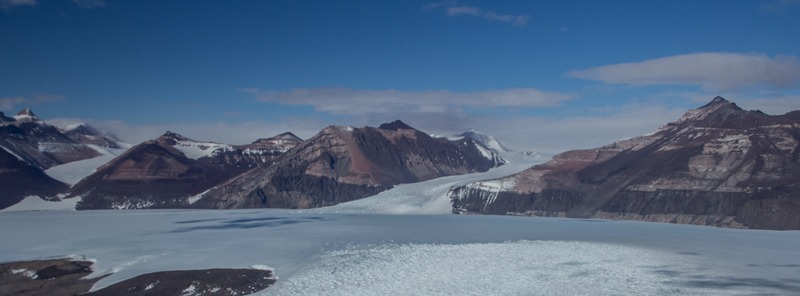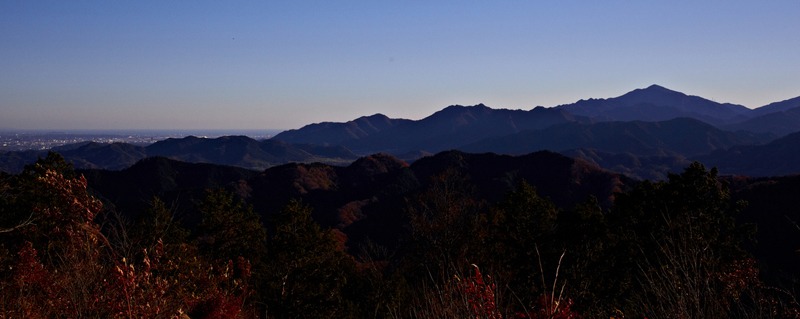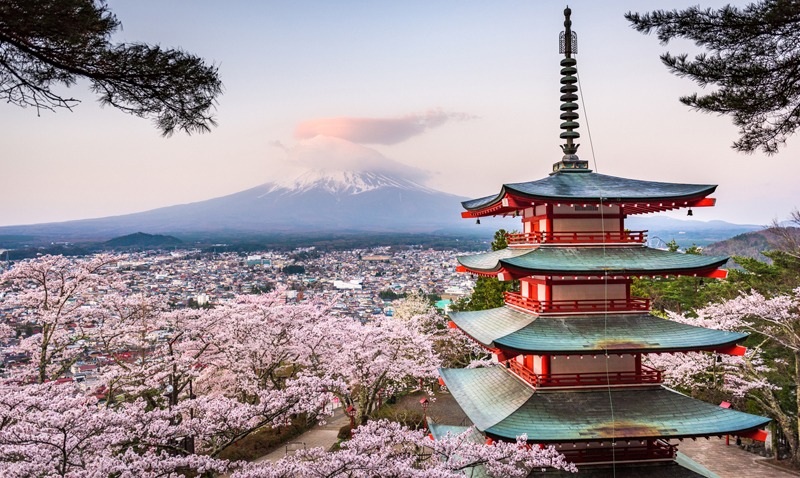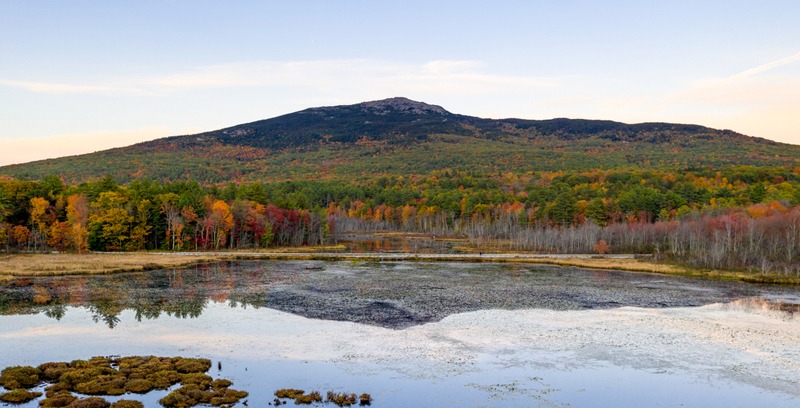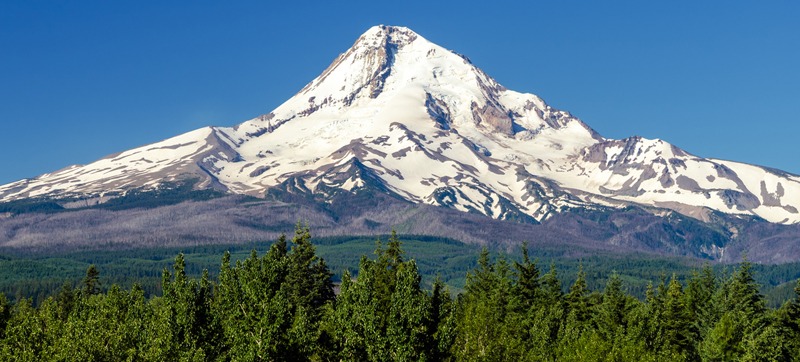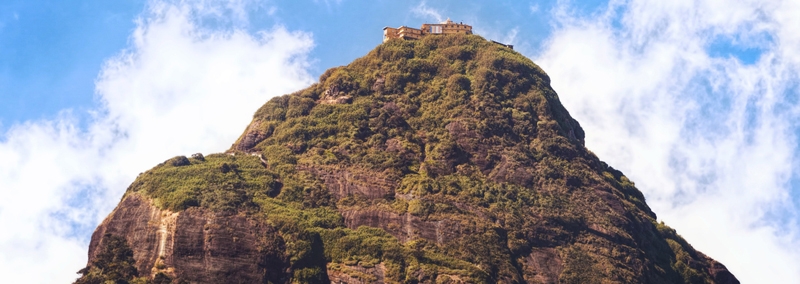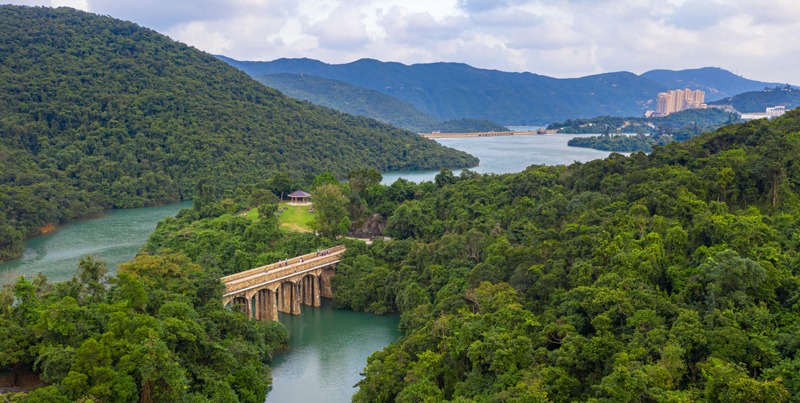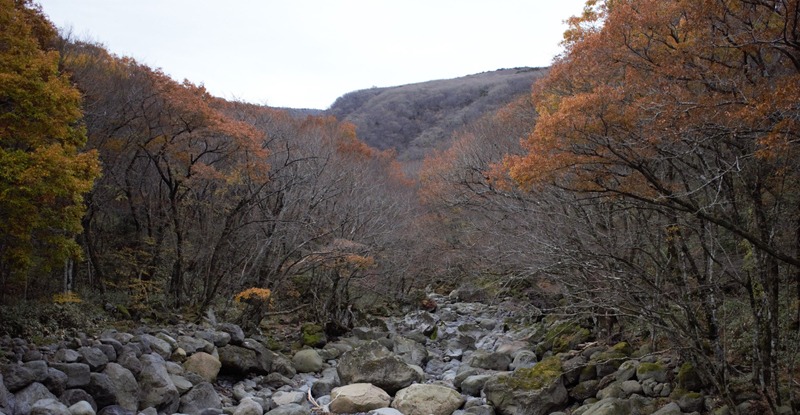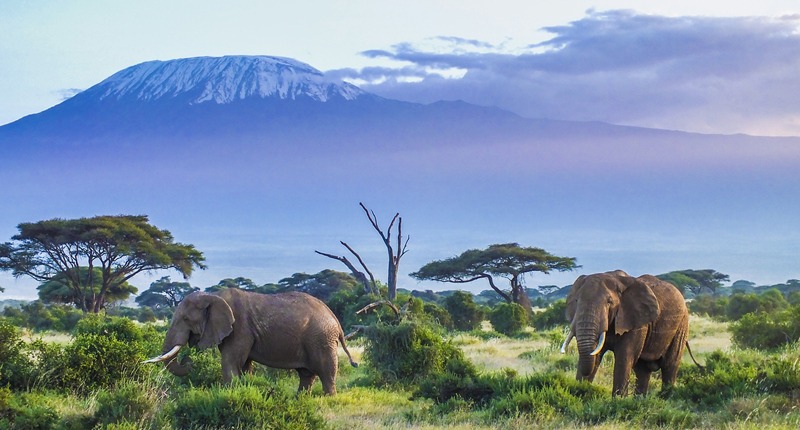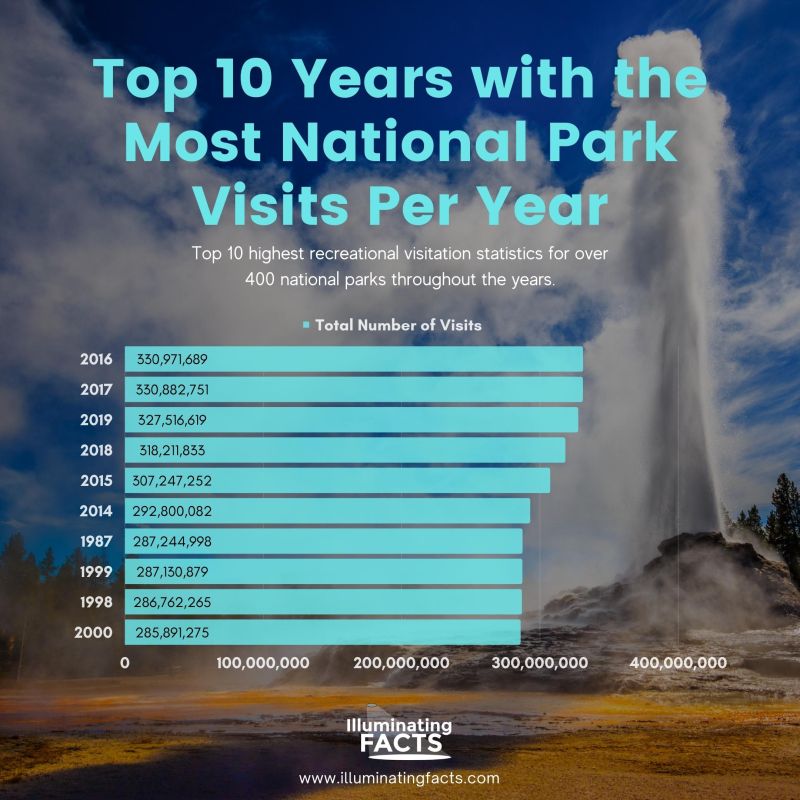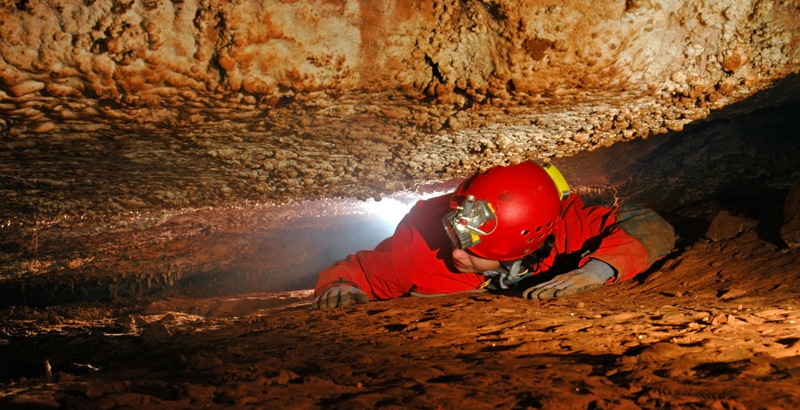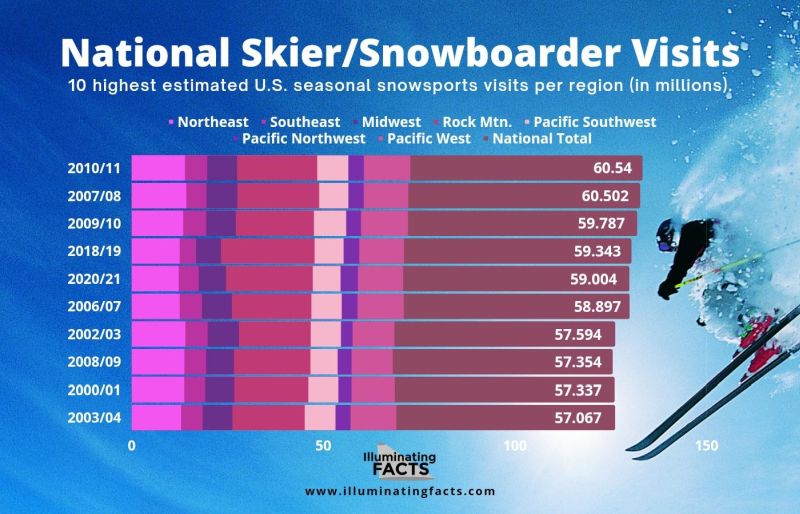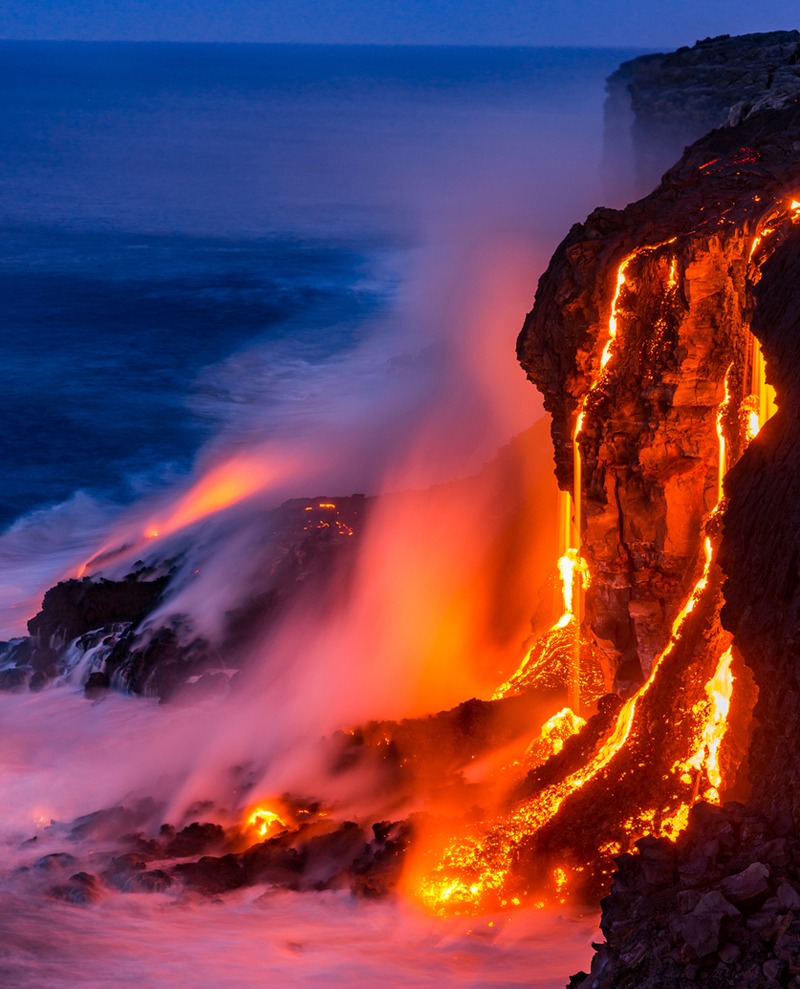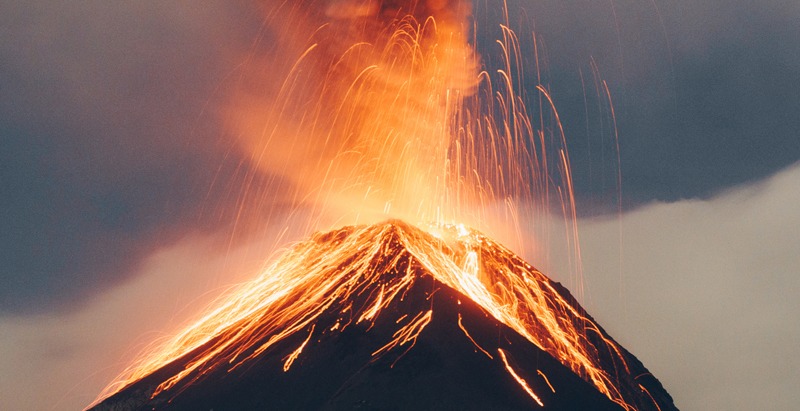Table of Contents
Background
tMountains are landscapes, massive slabs of rock that rise from the earth’s surface, including the oceans. They have steep slopes with rounded or sharp ridges and a high point known as a summit or peak.[17] However, there is a lot to learn about mountains that can help you better understand these massive structures.
This article will cover facts about the Earth’s mountains, including how they’re formed, key mountain facts, the tallest mountains and longest mountain ranges, the most visited and most climbed mountain, and interesting facts that are sure to pique your mind.
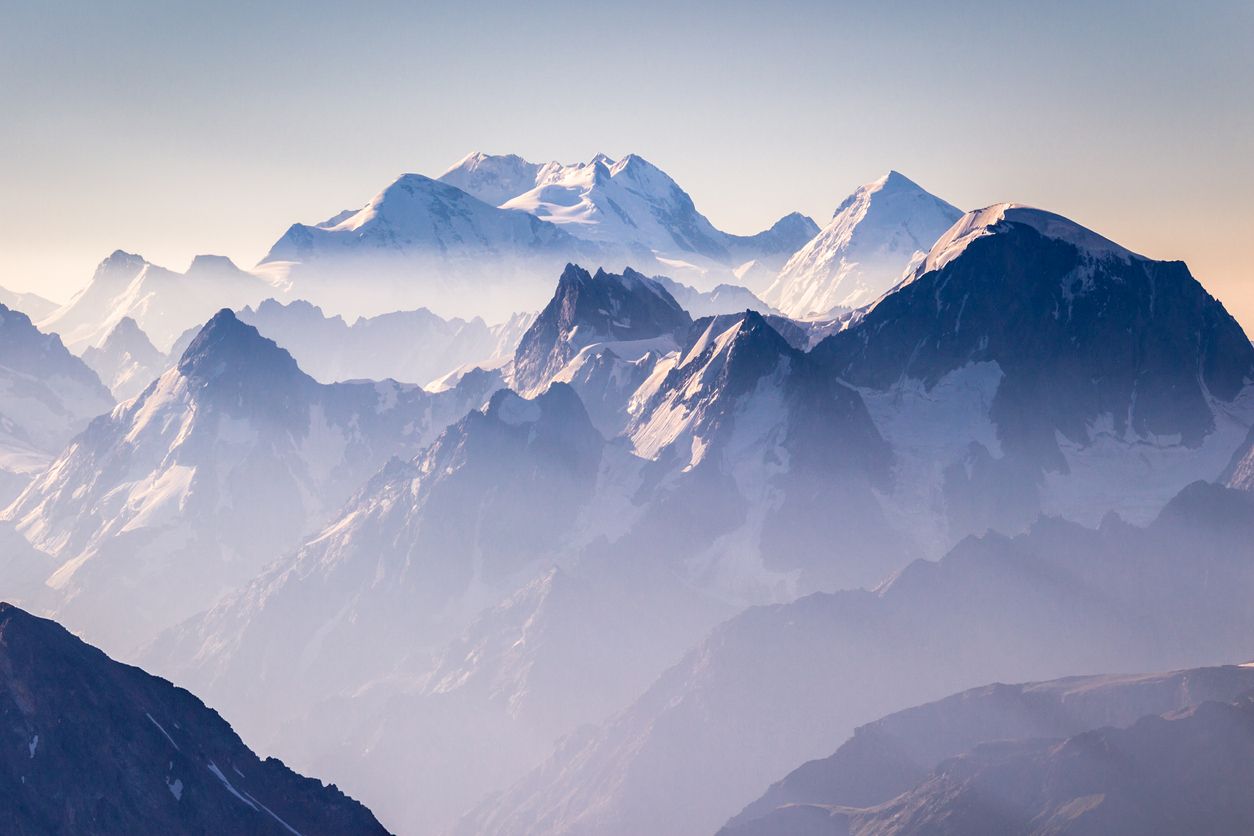
snow-covered mountains, fog
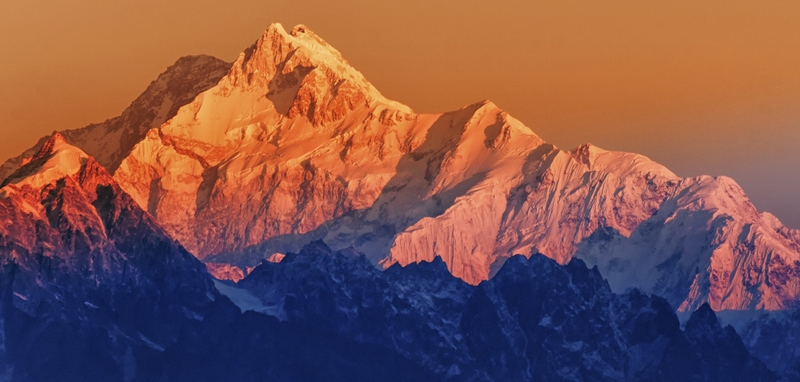
light from sunrise on Mount Kanchenjunga
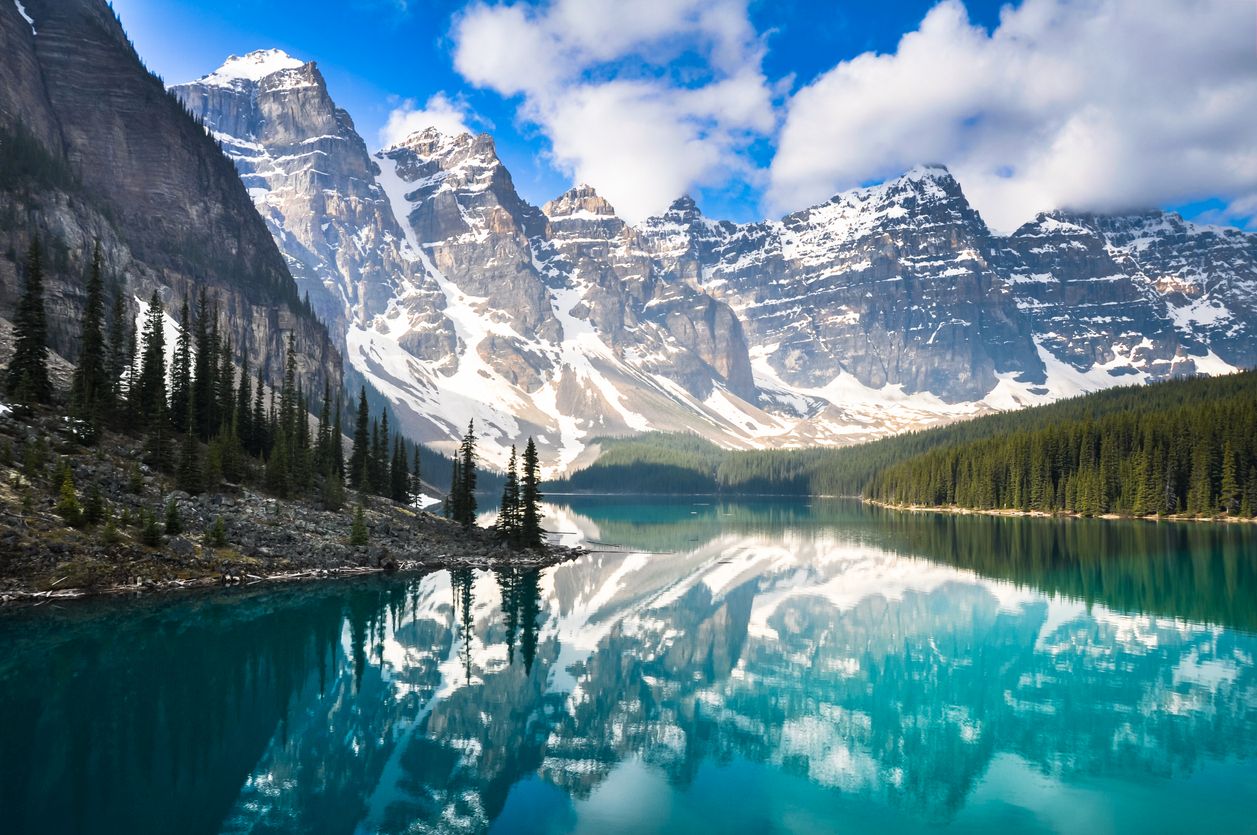
Rocky mountains, snow, lake, trees
History
Plates of the Earth’s crust slam against one another in a process known as plate tectonics and bend up like the hood of a vehicle in a head-on collision, forming the world’s largest mountain ranges. Using this analogy, the Himalayas in Asia resulted from a major wreck that occurred approximately 55 million years ago.
When hot magma from deep under the planet erupted through the crust and piled up on itself, volcanic mountains arose. Undersea volcanoes built Hawaii’s islands, and the islands visible above water now are the remains of those volcanoes.
Mount Fuji in Japan and Mount St. Helens in Washington State are well-known volcanoes on land. Volcanic eruptions can sometimes devastate mountains rather than build them up, such as the 1980 eruption that ripped the summit of Mount St. Helens.
Dome mountains arise when magma pushes the crust higher but solidifies before erupting onto the surface. The domes are battered by the elements, shaping peaks and valleys. The Adirondack Mountains of New York and the Black Hills of South Dakota are two examples.
Plateau mountains resemble dome mountains, but they are formed when clashing tectonic plates push the ground upwards without faulting or folding. Weathering and erosion shape them after that.
Other types of mountains arise when tensions between and within tectonic plates cause the Earth’s surface to crack and fault, forcing rock blocks up and down. The Tetons in Wyoming, the Sierra Nevada in Nevada and California, and the Harz Mountains in Germany are fault-block mountains.
Key Facts
Mountains are frequently used to define the natural borders between countries. Their height can impact weather patterns, slowing storms that sweep in from the oceans and wringing water from clouds. The opposite side is frequently significantly drier.
Even fleeing and foreign invaders might find refuge—and protection—in the harsh environments.
Earth’s Top 10 Tallest Mountains
The Himalayas are home to thirty of the world’s tallest peaks. At 29,035 ft (8,850 m), Mount Everest is the tallest peak on the planet.
Mauna Kea is an inactive volcano located on the Hawaiian island of Oahu in the Pacific Ocean. It’s the world’s tallest peak assessed from top to bottom. Mauna Kea reaches 33,474 ft (10,203 m) high from its base, rising only 13,796 ft (4,205 m) above sea level.
Below is a table showing ten of the world’s tallest mountains. [1]
Top 10 Longest Mountain Ranges
This list of the world’s longest mountain ranges includes the name of the highest peak as well as the length of each range. [2]
Tallest Mountains in the World
Mount Everest (29,035 ft)
Mount Everest, the planet’s tallest mountain, was first ascended by Tenzing Norgay and Sir Edmund Hillary in 1953. It’s situated on the Nepalese-Chinese border. Mount Everest’s peak is 8,848.86 meters (29,031.69 ft) above sea level, higher than any other mountain on the planet.
K2 (28,250 ft)
K2 is the world’s second tallest peak. Its name comes from the Great Trigonometrical Survey of British India’s notation. Despite being the world’s second tallest mountain, K2 is widely regarded as one of the most difficult to climb mountains globally, notoriously more difficult than Mount Everest.
Kangchenjunga (28,169 ft)
Kangchenjunga is the world’s third-highest peak. The mountain is situated on the border of Nepal and Sikkim, India, with three peaks right on the border and the other two in the Taplejung District in Nepal.
Kangchenjunga is thus India’s highest mountain. Until 1852, it was assumed that the peak was the highest on the globe. This was not because individuals were unaware of Mount Everest but rather because their estimations were incorrect.
Lhotse (27,940)
Lhotse is one of the most well-known mountains on any ranking of the world’s top ten highest peaks, owing to its closeness to Mount Everest. From Everest Base Camp, climb to Camp 3 and then to the Reiss couloir on the Lhotse Face, where you will reach the summit of Lhotse.
Longest Mountain Ranges
Andean Mountains
The Andean mountains, popularly known as the Andes, stretch 4,300 miles over southern Chile, Colombia, Ecuador, Peru, Bolivia, Argentina, and Venezuela. Many active volcanoes are found in this range, notably Ojos del Salado near the Argentina-Chile border.
Because of its length, the Andes are separated into three primary climate zones: the Dry Andes (in Chile, northwest Argentina, and Bolivia), the Tropical Andes (in northern nations), and the Wet Andes (in Argentina and Chile at specific latitudes where there’s more precipitation).
Southern Great Escarpment
The Southern Great Escarpment, which ranks second on this list, is an African mountain range that stretches 3,100 miles through South Africa, Zimbabwe, Swaziland, Lesotho, Namibia, and Angola. The Southern Great Escarpment’s highest point is 11,424 ft above sea level.
Today, the South African portion of the mountain chain is built on top of basalt lava with soft sandstones beneath, distinguishing it from other rockier mountain ranges.
Rocky Mountains
The Rocky Mountains are North America’s longest mountain range while being only the world’s third longest mountain range. These mountains commonly referred to as “the Rockies,” spread about 3,000 miles across two nations, from northern British Columbia (Canada) to New Mexico (USA).
The Rockies emerged between 80 to 55 million years ago. They have been inhabited by many indigenous peoples of America since the last ice age, around 12,000 years ago. The majority of the mountain range is owned by the government and designated as protected parkland.
Transantarctic Mountains
The continent of Antarctica’s fourth-longest mountain range stretches for around 1243 miles across the continent. Antarctica is divided into two halves by the Transantarctic Mountains: West and East Antarctica. It functions as an icy barrier that separates the continent into two.
The Transantarctic Mountains are encased in ice to an estimate of 98 percent. As a result, most of these mountains are inaccessible.
Research has proven that these mountains originally had a more diverse reptile and plant life, as evidenced by the discovery of fossils. Still, the current circumstances in these mountains are better suitable for penguins.
The World’s Most Mountainous Regions
The following regions are the most mountainous globally based on their average height above sea level. [8]
Bhutan
The average elevation in Bhutan is 10,760 feet. The Greater Himalayas dominate Bhutan’s northern regions, with Gangkhar Puensum, at 24,840 ft above sea level, being the highest peak. Gangkhar Puensum is the world’s tallest unclimbed mountain. Most Bhutanese people live in the country’s southern regions, consisting of lowlands, hills, and mountains.
Nepal
With an average elevation of 10,715 ft, Nepal is the world’s second-highest mountainous country, slightly behind Bhutan. Mount Everest, the world’s tallest mountain peak at 29,035 feet, is located in Nepal.
Tajikistan
Tajikistan is 10,455 ft above sea level on average. Tajikistan is located in a seismic area, contributing to the country’s earthquake activity and steep mountains. The Turkestan Range, located in western Tajikistan, reaches a height of 18,077 feet.
Kyrgyzstan
About 65 percent of Kyrgyzstan’s area is covered by the Pamir and Tian Shan mountain ranges. In Kyrgyzstan, the majority of the mountains are relatively new. The average elevation of the country is 9,805 ft above sea level.
Antarctica
The average elevation of Antarctica is 7,545 meters above sea level. While Antarctica is a continent rather than a country, it features some of the world’s most hilly terrain and the most significant average elevation of just about any continent. Mount Vinson, at the height of 16,050 ft, is Antarctica’s highest mountain summit.
Lesotho
The Drakensburg-Maloti mountain ranges stretching north to south across Lesotho cover most of the country’s topography. The mountains’ lowlands are home to most of Lesotho’s inhabitants. The tallest mountain peak in southern Africa, Thabana Ntlenyana, is located in Lesotho and stands at 11,424 ft.
Andorra
Andorra is 6,550 ft above sea level on average. The majority of Andorra’s terrain is covered with mountains. Andorra’s highest point, the Pic de Coma Pedrosa, is 9,665 ft above sea level.
Afghanistan
Afghanistan is 6,180 ft above sea level on average. Approximately 75% of Afghanistan’s geography is hilly, with an average elevation of 6,650 ft in nearly half of the nation. Afghanistan’s mountains include several Himalayan extensions.
Chile
Chile’s geography is generally high-elevation, with an average elevation of 6,140 ft above sea level. The Andes Mountains, with peaks averaging 15,000 ft above sea level, cover much of the area in the east.
China
The average elevation of China is 6,035 ft above sea level. Much of China’s geography is covered in high elevations, including Mount Everest, which stands on the Chinese-Nepal border.
Most Visited and Most Climbed Mountains in the World
Mt. Takao (Japan)
Mt. Takao in Tokyo receives over 2.6 million visitors annually, making it the most visited mountain globally. This mountain, known in Japanese as Takaosan, stands 599 m (1,865 ft) tall and is about 50 minutes by rail from Shinjuku Station.
Mt. Takao can be climbed in a variety of ways. Each trail has a distinct degree of difficulty, anticipated time, and length; however, hikers can choose trails based on their preferences and abilities.
There is a chair lift and a cable car that guests can take to the heart of the mountain if they like to take in the views but not walk. Next to Takaosanguchi Station is the Takao Tozan Railway station with chair lift and cable car boarding platforms.
Mount Fuji (Japan)
With its perfectly conical background to Tokyo, Japan, a metropolis of 13 million people, it’s no surprise that Mt Fuji is frequently touted as the most climbed and visited mountain in the world. According to statistics, over 300,000 people ascend the icy summit of Japan’s highest mountain yearly. [3]
Considering that the official climbing season is only two months long (July and August), you can imagine how swarm-like it can be. The ever-increasing crowds indicate that not everyone believes the old Japanese proverb that a clever person climbs Mount Fuji once, but only a fool climbs it twice.
Mt. Monadnock (USA)
The appeal of Mt Monadnock, a somewhat unremarkable mountain that’s sometimes billed as the world’s second most climbed mountain, can also be explained by its proximity to the population. It’s only a two-hour trip from Boston and less than five hours from New York in the US state of New Hampshire.
Monadnock only rises to 965 meters above sea level. Therefore it hardly qualifies as a mountain, yet best estimates imply that over 125,000 hikers ascend it yearly. Trails lead to the top from nearly every direction, with the Dublin Trails and White Dot being the easiest.
Mt. Hood (USA)
This 3429-meter Oregon volcano is also known for being the world’s second most climbed peak, even though the claim is difficult to maintain. According to estimates, up to 20,000 people rise to the summit each year, making it more plausible (as some believe) that it’s the world’s second most climbed mountain above 3000 meters, or even the world’s second most climbed challenging mountain.
Unlike most of the peaks on this list, Mt Hood requires crampons and an ice ax to ascend. Still, its reputation for surrendering more quickly than similar summits has made it a draw for inexperienced climbers – over 40 people have perished on the mountain since 2000.
Croagh Patrick (Ireland)
Convert a mountain into a pilgrimage, and people will come. This low-lying peak in Ireland’s far west has become famous as the location where St Patrick – he of the exiled snakes and green beer – is said to have fasted and prayed for 40 days and nights.
For ages, pilgrims have gathered to honor the saint on Reek Sunday, the last weekend in July. On that weekend alone, roughly 30,000 individuals, some barefoot, ascended the 764-meter peak. Croagh Patrick has been accused of being over-loved, but it hasn’t stopped pilgrims from flocking to the site. Although Reek Sunday was canceled in 2015 owing to dangerous weather conditions, hundreds of people still participated.
Adam’s Peak (Sri Lanka)
Adam’s Peak may make Reek Sunday appear like a bit of a family picnic on a January morning. The pilgrimage to this holy mountain, which has a ‘sacred footprint’ on its summit, has religious significance for people of all faiths:
- Buddhists believe it’s Buddha’s footprint.
- Christians and Muslims believe it’s the area where Adam first set foot on Earth.
- Hindus believe it’s Shiva’s footprint.
The pilgrimage period on the conical mountain lasts from December to May, with a steady stream of pilgrims during this time. You should climb throughout the night to be on the summit by sunrise if you want to do it right – the trail is lit.
Mt. Tai (China)
If there’s one mountain on the Earth that might legitimately claim the title of most climbed, it’s this Chinese summit near the Shandong city of Tai’an. Mt. Tai is the most well-known and respected of China’s holy Taoist mountains, with up to two million people estimated to visit its 1545-meter top each year.
Its allure isn’t just the legendary sunrises – it was formerly thought that the sun began its everyday trip here – but also the adage that if you climb Mt. Tai, you’ll live to be 100 years old. A complex of temples surrounds the top, part of an imperial religion for hundreds of years.
Hallasan (South Korea)
Two factors indicate that South Korea’s tallest mountain could be one of the world’s busiest summits. First, the travel from Seoul to Jeju Island, where Hallasan is an inevitable focal point, is one of the world’s three busiest aviation routes. Second, the large mobs regularly gather on the wooden decks at the peak.
The dormant volcano, which stands at 1950 meters, has a lava plug that still stands strong as the stony peak. Only two (Gwaneumsa and Seongpanak) of the seven hiking trails traverse its slopes to reach the peak. The paths in Korea might be as many catwalks as boardwalks.
Mt. Kilimanjaro (Tanzania)
The most climbed mountain of the Seven Summits (the highest summits on each continent), and maybe the most climbed peak over 5000 meters. Around 25,000 individuals are expected to attempt to ascend Africa’s highest mountain every year, while success figures are often muddied by trekking organizations boasting unrealistically high summit success rates.
Kili’s glaciated summit practically crosses the equator, but its fame stems in part from its unique non-technical climb for such a high mountain, accessible to hikers. There are seven pathways to the peak, with the Marangu route becoming known as the ‘Coca-Cola Route’ because of its popularity.
Table Mountain (South Africa)
The fact that a cable car runs right up to the summit from Cape Town inflates the figures on Table Mountain’s “ascents.” The cable car that has been operating since 1929 currently transports more than 800,000 passengers to the notoriously flat hilltop annually. Still, those who want their mountains to be a little more challenging may always trek to the top.
There are several walking trails; the most popular and direct is the Platteklip Gorge Trail, which cuts steeply down a gorge worn into the rock wall. The trek to the peak should take approximately two hours, or the cable car should take around five minutes.
Most Visited and Most Climbed Mountains in the US
Pikes Peak
Pikes Peak is undoubtedly one of Colorado’s toughest fourteeners (mountains reaching over 14,000 ft above sea level). The Barr Trail, a grueling 13 miles one way with an elevation gain of nearly 8,000 feet from bottom to summit, is the most common route to the top. Most hikers pack a sturdy bag for an overnight stay at a base camp and make an early boost for the summit the following day. [9]
When you get to the summit, though, you’ll be met a little differently than with the other fourteeners, with a snack stand, gift shop, and, on occasion, a slew of visitors who drove or took the scenic train to the top. Outside of the winter, you may climb Pikes Peak any time of year, but be ready for afternoon storms if you venture in the summer.
Mount Mitchell
Mount Mitchell, the tallest summit east of the Mississippi River, kisses the sky at 6,684 feet. The challenge with this peak is the rapid height rise, despite not appearing to be that high. The Mount Mitchell Trail climbs 3,689 feet from 2,995 feet in about five and a half miles.
Altitude sickness is common among hikers who come from lower elevations. Despite its low elevation of fewer than 7,000 feet, Mt. Mitchell turns hikers around daily. Inclement weather can occur at any time (snowstorms can occur at any time of year), and the trail is never flat—hikers rarely come across manageable, flat lengths of track to coast along.
You might obtain some bragging rights if you can hike this summit in less than four hours. The most excellent time to visit Mount Mitchell is between May and October, when the weather is moderate. If you visit in the winter, you’ll almost certainly be met with two or more feet of snow.
Capitol Peak
Capitol Peak, Colorado’s tallest fourteener, is a challenge for even the most experienced hikers. The Northeast Ridge, also called the Knife Edge path (despite the somewhat fearsome reputation ), is the easiest method to reach the summit of this peak. Depending on the year, you can access this conventional route from either West Snowmass Creek or Capitol Creek and Lake.
Capitol Creek is simpler to navigate in the summer and fall, especially if you want to bypass certain difficult stream crossings. Hikers favor West Snowmass Creek in the winter and spring for a more direct and accessible approach to Knife Edge. The hike will be a 16-17 miles round trip, with an elevation gain of 5,800-ft, depending on which direction you go. Pack your bag with enough supplies to last at least two days to be safe.
Mount Rainier
Mount Rainier in Washington is one of the most well-known summits in the region, with thousands of climbers attempting it each year. It’s the seventh highest mountain in the United States, and on a clear day, you can see it from Seattle, Washington. You’ll find a challenge in one of Mount Rainier’s many different routes, whether you’re a beginner or a seasoned veteran seeking to brush up on your skills.
Experienced hikers typically use the Emmons Glacier and Disappointment Cleaver routes to reach one of the three individually categorized summits, Point Success, Liberty Cap, and Columbia Crest (the highest at 14,411 ft). If you want to hike in the ideal weather, go between May and August.
Top 10 Most Visited National Parks (2020)
This list of the 10 most visited National Parks out of the 423 parks in the 2020 National Park System statistics is topped by the Great Smoky Mountains National Park, which receives a visit of a whopping 12.1 million every year due to its lush forests and abundance of wildflowers. [28]
Top 10 Recreation Visits per Year
This shows the top 10 highest recreational visitation statistics for over 400 national parks throughout the years. [28]
Top 10 Most Popular Mountain Activities
Hiking
Hiking is possibly the most popular mountain activity. It doesn’t necessitate any prior knowledge. It’s preferable to hire a local guide who can offer their expertise in the hiking paths, the surrounding beauty, and the area’s natural and cultural variety.
Rock Climbing
Climbing mountains and rock formations is a mentally and physically challenging adventure. It’s preferable if you hire a guide because it necessitates a thorough understanding of the terrain and the use of specialized equipment, all of which are essential for the safe completion of the course (carabiners, ropes, and harnesses).
Trekking
Trekking is a “longer and more difficult” variant of hiking in the undeveloped wilderness to explore and appreciate the landscape while also getting away from society. It usually demands a good mountain orientation, the capacity to walk for several days, and the ability to carry the necessary gear in a backpack.
High Mountaineering
Climbing to the summit of high alpine summits on all types of terrain, including snow, glacial ice, glacier, and rock, is known as high mountaineering. The activity necessitates using several skills and equipment, including a helmet, harness, crampons, rope, an ice ax, and a well-prepared professional mountain guide.
Caving
Caving is a mountain adventure sport that involves exploring unexplored caves and chambers. It’s best done with a helmet, a competent caving instructor, a headlamp, and the desire to see the world from a different perspective.
Via-Ferrata
Via-Ferrata is a popular mountain rope activity on so-called “iron highways,” in which adventurers ascend on steel cables, ladders, and bridges that are anchored to the rock, allowing them to experience breathtaking views and steep peaks. Because basic scrambling and climbing techniques, particularly Via-Ferrata equipment, are required, hiring a local mountain guide is recommended.
Mountain Biking
Mountain biking is a fun and athletic mountain activity that allows you to see a destination more quickly and dynamically. It requires special mountain biking equipment (helmets and mountain bikes) and a thorough understanding of the off-road terrain, so hiring a guide is always recommended.
Snowshoeing
Snowshoeing tours take you into the mountains with a head guide to discover huge valleys and stunning summits. Traditional snowshoes are long gone, replaced by ergonomic plastic crampons that fasten to your winter boots. Traditional snowshoes are lighter and easier to handle than skis.
A casual snowshoeing activity is excellent for you if you’re searching for a relaxing activity that’ll get you out and about without needing classes or technical expertise — if you’re fortunate, you might even encounter one of the Alps’ wild mountain creatures!
Hang Gliding
Hang gliding adventures allow you to fly through the mountains and glide alongside birds of prey. Plank in mid-air with a specialized one or two-person glider to have you riding the rapid winds that blow through the peaks for a fantastic feeling of stasis with killer vistas to match.
On a duo or solo hang gliding flight, conquer enormous mountains while controlling the air. Remember to include paragliding and paramotoring in your itinerary.
Skiing and Snowboarding
Many people associate winter travel with warmer weather. Still, you can always spice things up by heading to the mountains and learning to appreciate the snow that so many people despise. It’s comfortable to curl up in front of the fire, but it’s even better after a day spent sculpting snow in a winter wonderland.
Ski Statistics
Skier Visits
These are the 10 highest estimated U.S. seasonal snowsports visits per region (in millions). [27]
U.S. Ski Areas in Operation (2010-2020)
Below are the total number of ski areas in operation per season from 2010 to 2020. [27]
*The number of active ski areas has remained relatively stable in recent seasons, with the majority of the variation due to the closure and reopening cycle of small ski areas.
Volcanoes
Volcanoes are fissures or vents in the planet’s crust that erupt lava, rock, ash, and gases on Earth. The buildup of these eruptive elements forms a volcano, which is also a mountain.
Volcanoes have been on Earth for a long time, and they are thought to have caused calamities such as the Permian mass extinction, which occurred 250 million years ago and was the largest mass extinction in the history of the Earth.
Most Active Volcanoes In The World
The following are the most active volcanoes in the world today. [10]
| Region/Continent | Volcano(es) |
| Europe |
|
| Africa |
|
| Indonesia |
|
| Mexico, Central America, Caribbean |
|
| South America |
|
| Antarctica |
|
| United States |
|
| Russia |
|
| South Pacific |
|
| Japan |
|
| Philippines |
|
Deadliest Volcanic Eruptions of the Past 25 Years
Here are the deadliest volcanic eruptions over the last 25 years. [11]
The Democratic Republic of the Congo (2021)
The effusive eruption of Mount Nyiragongo resulted in the death of 32 people and the displacement of a thousand homes. [13]
Philippines (2020)
A phreatic eruption from the Taal’s main crater spewed ashes to Metro Manila, Calabarzon, Pangasinan, and Central Luzon, killing 39 people. [14]
Indonesia (2018)
A major eruption by the Anak Krakatoa triggered a tsunami, killing at least 420 people and injuring 14,000 more. Because of the landslide, the volcano’s height was reduced from 338 m to 110 m. This event was the deadliest volcanic eruption of the 21st century to date. [15]
Guatemala (2018)
At least 62 individuals were killed, and 300 were injured after Volcán de Fuego’s most powerful eruption in Guatemala since 1974. Ash pushed the closure of La Aurora International Airport in Guatemala City. [16]
Japan (2014)
In Japan’s biggest volcanic disaster in nearly 90 years, the abrupt eruption of Mount Ontake claimed more than 60 people. When the 3,067-meter (10,121-foot) Ontake erupted without notice in September, it was crowded with hikers.
In February, an eruption of Mount Sinabung that had been dormant for 400 years before bursting back to life five months earlier killed at least 16 people on the Indonesian island of Sumatra. Another explosion killed seven people in 2016, wherein towns were burnt, and crops were destroyed.
Indonesia (2010)
One of the world’s most deadly volcanoes, Mount Merapi, erupted its most intense eruption since 1872 on the highly populated central Java island, devastating more than 300 people. A total of 280,000 individuals have been evacuated. Another eruption killed 1,300 people in 1930, and a third killed over 60 people in 1994.
Democratic Republic of Congo (2002)
Mount Nyiragongo erupted, destroying the town of Goma’s town and other residential areas and killing over 100 people.
Peru (1999)
At least 34 people have gone missing as mudslides buried five Andean towns northeast of Lima due to a rapid volcanic eruption.
Montserrat (1997)
When the little British colony’s volcano erupted, the capital, Plymouth, was wiped off the map, and 20 people were murdered or left missing in avalanches of ash clouds and hot rock.
Philippines (1996)
After the crater of the Parker volcano in Mindanao’s south collapsed, at least 70 people died, and another 30 were missing. More than 800 people were killed five years ago when Mount Pinatubo erupted 80 kilometers (50 miles) north of Manila.
Interesting Facts
How Many Mountains Are There on Earth?
There are 1,187,049 mountains on the Earth right now! These are the mountains with names and a more than one-meter prominence. [4]
Here are some numbers for specific countries:
In the United States – 77,706 named mountains
In Italy – 42,541 named mountains
In Switzerland – 10,811 named mountains
World’s Actual Longest Mountain Range
The Andes and the Rockies aren’t the world’s longest mountain ranges; they’re called the mid-ocean ridge, stretching for 40,389 miles. [5] Yes, it’s one-and-a-half times the circumference of the Earth!
How is that possible? Approximately 90% of the mid-ocean ridge system is below water. This system of valleys and mountains, resembling baseball stitches, crisscrosses the planet. [5]
The shifting of the Earth’s tectonic plates formed it. However, there’s just one site in the world where you can view it easily: Iceland. Everything else is submerged.
World’s Longest Mountain Name
With 85 characters, a mountain in New Zealand holds the Guinness World Record for the longest mountain name: Taumatawhakatangihangakoauauotamateapokaiwhenuakitanatahu. The word means “The spot where Tmatea, the man with the huge knees, who slid, climbed, and swallowed mountains, known as – land eater – played his nose flute to his loved one,” in English. [6]
Other Random Mountain Facts
- The Himalayas contain thirty of the world’s highest mountains.[17]
- Some 1,200 individuals try to climb Mount Everest every year, but only half of them succeed.[18]
- Over the last century, some 300 individuals have died trying to conquer Everest. Hundreds of bodies are still frozen solid on the mountain.[18]
- The Himalayas are a mountain range that started to form 55 million years ago when portions of the earth’s crust collided.[17]
- Before the invention of GPS and altimeters, geographers surveyed mountains using a technique known as triangulation, which entailed measuring the mountain peak from several different observation locations.[19]
- Every year, six people die attempting to summit Mt. Everest.[18]
- On a list of the solar system’s ten tallest mountains, five are situated on the Martian surface.[20]
- Noah’s ark ultimately came to rest, as per the book of Genesis, when it landed on the foothills of Mount Ararat, which is located in a hilly region that encompasses modern-day Turkey and Iran.[21]
- The best month to attempt to climb Mount Everest is May. This little window of opportunity occurs between the winter and summer monsoon seasons.[18]
- Nearly half of the 80,000 World War I men stationed in the Alps in Austria died in avalanches rather than in battle.[22]
- Moses received the Ten Commandments while he was communing with God at Mount Sinai in Egypt’s the Sinai Peninsula, according to the Bible.[21]
- Olympus Mons on Mars, at 15.5 kilometers tall, is the highest mountain in the solar system. Everest, by comparison, is about 5.5 miles tall.[20]
- Over a single year in the Swiss Alps, a 19th-century researcher witnessed approximately 17,500 avalanches.[22]
- Mountain men were males who lived on the outskirts of the American frontier in the nineteenth century. They were excellent survivalists who supplemented their income by catching animals to trade at trading posts to meet the demand for fur.[23]
- In the nineteenth century, Jim Bridger was America’s most famous mountain man, having blazed several mountain pathways for pioneers and been credited with discovering the Great Salt Lake in 1824.[23]
- Mountain goats, which you may find in most of North America’s mountains, are antelopes, not goats.[24]
- Mountain goats can leap 12 ft in a single bound.[24]
- Mountain goats possess cloven hooves with two toes that may spread wide to boost their balance and a rough pad on the sole of each toe that offers them exceptional traction, allowing them to push higher than most humans.[24]
- Human attacks on mountain lions have increased in recent years as humans have pushed further and further into mountain lion territory.[25]
- Mountains are divided into three types: accumulation mountains, which are generated by volcanic eruptions; folding mountains, which are formed by the collision of the earth’s tectonic plates; and erosion mountains, which are formed by extreme weather.[26]
- Mountaineering became a sport in the mid-nineteenth century when people seeking an escape from the stress of industrialization started to climb previously unreached peaks across Europe for fun rather than for scientific research.[26]
- When Charles VII of France viewed the 7,000-foot-high Mont Aiguille in the Dauphine Mountains in 1492, he was so impressed that he instructed his chamberlain to arrange a party and climb to the top, which the chamberlain did successfully.[26]
- Philip of Macedon, Alexander the Great’s father, climbed Mount Haemus in the Balkans to see the Aegean and Adriatic oceans from the summit.[26]
- Marguerite “Meta” Brevoort was among the few outstanding female mountaineers of the 19th century; she was a member of the first-ever mountaineering expedition to ascend the central peak of Europe’s 13,000-foot-high Meije and, after Lucy Walker, the second woman to climb the Matterhorn.[26]
- The first guidebook for ascending beyond the Alps’ snow lines was written in the late 16th century; nevertheless, mountain climbing was considered foolish at the time, and hence few individuals in the 16th century attempted its instructions.[26]
- In 1760, a naturalist named Horace Benedict de Saussure offered a reward to someone who could complete the entire journey up Mont Blanc, Europe’s highest mountain peak, to acquire scientific knowledge. Dr. Michel Paccard ascended the mountain for 26 years before receiving his reward.[26]
- When four climbers died while scaling the Matterhorn in 1865, mountaineering fell out of favor for a brief period, sparking a worldwide debate about whether this deadly sport was dumb and unethical.[26]
- The Alpine Club was founded in 1858 to plan and sponsor expeditions to climb the world’s highest mountain peaks and acquire scientific data. It still publishes a periodical on mountain climbing today.[26]
- Professor Tyndale, an early vice-president of the Alpine Club, resigned in outrage after another member gave a lecture claiming that the purpose of climbing mountains was to find solace in “God’s temples.”[26]
- Because of European forces’ thorough training and equipment for ascending the Alps in battle, mountaineering grew popular following WWII.[26]
- Charles Granville Bruce, a 19th- and 20th-century Himalayan explorer, is mainly responsible for teaching native Sherpas to climb, a practice they have carried down, making them valuable guides for climbers attempting to summit Everest.[26]
References
[1] Infoplease.com Staff, 2017. The Top Ten: The World’s Highest Mountains. Infoplease.com. Available at:
https://www.infoplease.com/world/geography/top-ten-worlds-highest-mountains [Accessed October 12, 2021].
[2] Adducation.info Editors. Longest Mountain Ranges on Earth Top 40 List. Adducation.info. Available at:
https://www.adducation.info/earth-general-knowledge/longest-mountain-ranges-on-earth/ [Accessed October 12, 2021].
[3] Andrew Bain, 2016. The world’s 10 most-climbed mountains. Traveller.com.au. Available at:
https://www.traveller.com.au/the-worlds-10-mostclimbed-mountains-gm4pqa [Accessed October 12, 2021].
[4] PeakVisor.com Editors, 2018. How many mountains are there on Earth? (Updated: November 1, 2020). PeakVisor.com. Available at:
https://peakvisor.com/en/news/how_many_mountains_on_earth.html [Accessed October 12, 2021].
[5] NOAA, 2021. What is the longest mountain range on Earth? Oceanservice.noaa.gov. Available at:
https://oceanservice.noaa.gov/facts/midoceanridge.html [Accessed October 12, 2021].
[6] Mystart.com Editors, 2020. 8 AMAZING FACTS ABOUT MOUNTAINS. Blog.mystart.com. Available at:
https://blog.mystart.com/8-amazing-facts-about-mountains/ [Accessed October 12, 2021].
[7] Hiromasa Uematsu, 2020. Mt. Takao, Tokyo – Guide To The Most Visited Mountain In The World! Matcha-jp.com. Available at:
https://matcha-jp.com/en/1329 [Accessed October 13, 2021].
[8] Worldpopulationreview.com Editors, 2021. Most Mountainous Countries 2021. Worldpopulationreview.com. Available at:
https://worldpopulationreview.com/country-rankings/most-mountainous-countries [Accessed October 13, 2021].
[9] Justin Fricke, 2019. MASTER THESE MOUNTAINS: 5 PEAKS TO CLIMB IN THE USA. Eaglecreek.com. Available at:
https://www.eaglecreek.com/blog/master-these-mountains–5-peaks-to-climb-in-the-usa.html [Accessed October 13, 2021].
[10] Jim Dobson, 2021. The 27 Most Active Volcanoes In The World And What Could Erupt Next. Forbes.com. Available at:
https://www.forbes.com/sites/jimdobson/2021/04/09/the-27-most-active-volcanoes-in-the-world-and-what-could-erupt-next/?sh=75d832227836 [Accessed October 13, 2021].
[11] Phys.org Editors, 2018. The deadliest volcanic eruptions of the past 25 years. Phys.org. Available at:
https://phys.org/news/2018-06-deadliest-volcanic-eruptions-years.html [Accessed October 13, 2021].
[12] Oyster Worldwide Limited Editors. These are 21 of the Best Places to Ski in the World. Oysterworldwide.com. Available at:
https://www.oysterworldwide.com/news/best-places-to-ski-in-the-world/ [Accessed October 13, 2021].
[13] Monica Mellon, 2021. THE 2021 NYIRAGONGO VOLCANIC ERUPTION IN THE DRC. Borgenproject.org. Available at:
https://borgenproject.org/volcanic-eruption-in-the-drc/ [Accessed October 13, 2021].
[14] Aaron Recuenco, 2020. 39 deaths recorded during Taal Volcano’s eruption. Manila Bulletin. Available at:
https://mb.com.ph/2020/02/01/39-deaths-recorded-during-taal-volcanos-eruption/ [Accessed October 13, 2021].
[15] Bernama, 2018. Number of injured in Indonesia tsunami surges to over 14,000. Thestar.com. Available at:
https://www.thestar.com.my/news/regional/2018/12/31/number-of-injured-in-indonesia-tsunami-surges-to-over-14000/ [Accessed October 13, 2021].
[16] Nina Lakhani, 2018. Guatemala volcano: at least 62 killed and 300 injured after Fuego erupts. Theguardian.com. Available at:
https://www.theguardian.com/world/2018/jun/04/guatemala-fuego-volcano-erupts-dead-missing [Accessed October 13, 2021].
[17] National Geographic Editors. Mountains. Nationalgeographic.com. Available at:
https://www.nationalgeographic.com/science/article/mountains [Accessed October 15, 2021].
[18] John Branch, 2017. You Want to Climb Mount Everest? Here’s What It Takes. New York Times. Available at:
https://www.nytimes.com/2017/12/18/sports/climb-mount-everest.html [Accessed October 15, 2021].
[19] James MacDonald, 2018. How to Measure a Mountain. JStor Daily. Available at:
https://daily.jstor.org/how-to-measure-a-mountain/ [Accessed October 15, 2021].
[20] Sarah Zielinski, 2019. The Tallest Mountains in the Solar System. Smithsonian. Available at:
https://www.smithsonianmag.com/science-nature/the-tallest-mountains-in-the-solar-system-16525451/ [Accessed October 15, 2021].
[21] Holy Bible, King James Version.
[22] John Jerome, 1978. On Mountains. New York: Harcourt Brace Jovanovich.
[23] Salem Media, 2020-2021. Mountain Men in the American West. History on the Net. Available at:
https://www.historyonthenet.com/american-west-mountain-men [Accessed October 15, 2021].
[24] National Geographic Editors. Mountain Goat. National Geographic. Available at:
https://www.nationalgeographic.com/animals/mammals/facts/mountain-goat [Accessed October 15, 2021].
[25] US Forest Service Editors. Mountain Lions. US Forest Service. Available at:
https://www.fs.usda.gov/visit/know-before-you-go/mountain-lions [Accessed October 15, 2021].
[26] Anthony Huxley, ed, 1962. Standard Encyclopedia of the World’s Mountains. New York: G.P. Putnam’s Sons.
[27] National Ski Areas Association. Industry Stats. Nsaa.org. Available at:
https://www.nsaa.org/NSAA/Media/Industry_Stats/NSAA/Media/Industry_Stats.aspx?hkey=7acdba03-11d0-4eb6-9a32-4a0092457077 [Accessed October 25, 2021].
[28] National Park Service Editors, 2021. Visitation Numbers. Nps.gov. Available at:
https://www.nps.gov/aboutus/visitation-numbers.htm [Accessed October 25, 2021].
